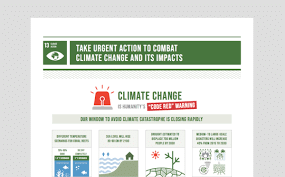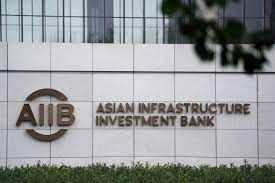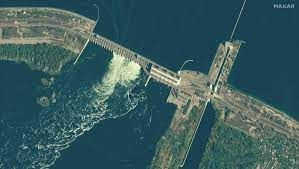UPSC Daily Current Affairs- 19th June 2023 | Current Affairs & Hindu Analysis: Daily, Weekly & Monthly PDF Download
GS-I
Malcha Mahal

Why in News?
The Lieutenant Governor of Delhi, recently issued directions requiring revamping of the forest area around the Malcha Mahal.
About Malcha Mahal:-
- It was built in 1325 by the then Sultan Firoz Shah Tughlaq.
- It was used as a hunting lodge for a long time.
- It later became the residence of the descendants of the Nawab of Awadh.
- Location: Delhi.
- Historical Background: it came to be known as ‘Wilayat Mahal’ after Begum Wilayat Mahal of Awadh, who claimed that she was a member of the royal family of Oudh.
- She was given the palace by the government in 1985.
- When she died it came into the ownership of her daughter Sakina Mahal, and son Prince Ali Raza (Cyrus).
- The monument is not Archaeological Survey of India(ASI)protected and, therefore, no attention was paid to it in all these years in order to conserve it.
- ASI: an Indian government agency.
- It is responsible for archaeological research and the conservation and preservation of cultural-historical monuments in the country.
- Founded in 1861 by Alexander Cunningham.
- He became its first Director-General.
- Ministry: Ministry of Culture
- HQ: New Delhi
Feroz Shah Tughlaq
- Firoz Shah Tughlaq was the third ruler of the Tughlaq dynasty.
- Tughlaq dynasty: ruled over Delhi from 1320 to 1412 AD.
- He ascended the throne of Delhi after the demise of his cousin Muhammad-bin-Tughlaq.
- Time period: from 1351 to 1388 AD.
Salient Features of his rule:-
- He gave imperative concessions to the Islamic scholars.
- He boycotted the practices these scholars deemed un-Islamic
- He started the imposition of Jaziya.
- He provided the principle of inheritance to the armed forces.
- Under this, the officers were permitted to rest and send their children to the army in their place.
- However, they were not paid in real money but by land.
- He imposed taxes like:-
- Kharaj: Land tax which was equal to one-tenth of the produce of the land.
- Zakat: Two and a half per cent tax on property realized from the Muslims.
- Kham: One-fifth of the booty captured (four-fifth was left for the soldiers)
- Jaziya: Levied on the non-Muslim subjects, particularly the Hindus.
- Women and children were, however, exempted from the taxes.
Source: Indian Express
Climate Change: Urgent Action Needed for a Sustainable Future

Why in News?
The recent reports on the southwest monsoon in India have sparked concerns about the impact of climate change on weather patterns. The adverse consequences of extreme weather events, such as floods, droughts, and crop damage, highlight the urgent need to address the climate crisis. The World Meteorological Organisation’s alarming report on global temperatures crossing the 1.5 degrees Celsius mark underscores the severity of the climate emergency.
How the Government Actions are Not Sufficient to Address the Climate Crisis?
- Insufficient Emissions Reduction Targets: Many governments have set emissions reduction targets that are insufficient to meet the goals outlined in international agreements such as the Paris Agreement. These targets often fall short of what is required to limit global warming to well below 2 degrees Celsius above pre-industrial levels.
- Slow Implementation of Renewable Energy Policies: Governments have been slow to implement and scale up policies and incentives to promote renewable energy sources. The transition to renewable energy is crucial for reducing greenhouse gas emissions, but many governments have not provided adequate support or created an enabling environment for renewable energy development.
- Reliance on Fossil Fuels: Governments continue to subsidize and support the fossil fuel industry, which contributes significantly to greenhouse gas emissions. These subsidies impede the transition to cleaner energy sources and perpetuate the use of fossil fuels, despite their detrimental environmental impact.
- Inadequate Climate Finance: The provision of climate finance, particularly from wealthier nations to developing countries, has fallen short of what is needed. The quantum of climate finance has not met the estimated requirements for adaptation and mitigation efforts outlined in international agreements like the Paris Agreement. This lack of financial support hinders developing countries’ ability to effectively address climate change.
- Limited Investment in Sustainable Infrastructure: Governments have been slow to invest in sustainable infrastructure projects that promote low-carbon transportation, energy-efficient buildings, and resilient urban planning. Without substantial investment in sustainable infrastructure, the transition to a low-carbon economy becomes more challenging.
- Weak Climate Policy Coordination: There is often a lack of coordination and collaboration between different government departments and agencies responsible for climate policy. This can lead to fragmented approaches and hinder the implementation of effective climate strategies.
- Insufficient Climate Education and Public Awareness: Governments have not done enough to educate the public about the severity and urgency of the climate crisis. This lack of awareness can limit public support for climate action and impede the adoption of sustainable behaviours and practices.
- Inadequate Preparedness for Climate Impacts: Governments have been slow to invest in measures to adapt to the impacts of climate change, such as building resilient infrastructure, implementing early warning systems, and developing climate-resilient agriculture practices. This leaves communities vulnerable to the adverse effects of climate change.
The Adverse Consequences of Extreme Weather Events Exacerbated by Climate Change
- Loss of Human Lives: Extreme weather events, such as hurricanes, floods, heatwaves, and storms, can result in the loss of human lives. These events pose direct threats to individuals through injuries, drowning, and other hazards associated with severe weather conditions.
- Physical Injuries and Health Impacts: Extreme weather events often lead to physical injuries, including cuts, fractures, and trauma. Additionally, they can have significant health impacts, such as heat-related illnesses, respiratory problems from air pollution, and waterborne diseases in the aftermath of floods.
- Displacement and Homelessness: Severe weather events can displace large numbers of people from their homes. Flooding, hurricanes, and wildfires can destroy or severely damage houses, forcing individuals and communities to evacuate and seek temporary or long-term shelter.
- Infrastructure Damage: Extreme weather events can cause substantial damage to infrastructure, including roads, bridges, buildings, and power lines. This damage hampers transportation, communication, and access to essential services, disrupting daily life and impeding recovery efforts.
- Agricultural and Livelihood Losses: Droughts, floods, and storms can have devastating effects on agriculture and livelihoods. Crop failures, soil erosion, and livestock losses can result in food shortages, increased food prices, and economic instability for farmers and rural communities.
- Economic Losses: Extreme weather events impose significant economic burdens on affected regions. Costs associated with repairing infrastructure, rebuilding homes, and restoring businesses can be substantial. Moreover, disruptions to industries such as tourism, agriculture, and manufacturing can lead to job losses and economic downturns.’
- Ecological Impacts: Extreme weather events can cause ecological disruptions and harm biodiversity. For example, wildfires destroy habitats, leading to the loss of plant and animal species. Flooding can contaminate water bodies and disrupt aquatic ecosystems.
- Social and Psychological Impact: The aftermath of extreme weather events can take a toll on individuals’ mental and emotional well-being. Displacement, loss of homes, and the challenges of recovery can lead to stress, anxiety, and trauma, both in the short and long term.
Responsibility of Wealthier Nations in Addressing the Climate Crisis
- Historical Emissions: Wealthier nations, particularly industrialized countries, have historically been the largest contributors to global greenhouse gas emissions. Their extensive use of fossil fuels and industrial activities over the years has significantly contributed to the current climate crisis. As such, they bear a responsibility for their historical emissions and the consequent impacts on the climate.
- Technological and Financial Capacity: Wealthier nations possess greater technological and financial resources to invest in clean energy technologies, adaptation measures, and climate mitigation strategies. Their capacity to support research and development, innovation, and the deployment of sustainable technologies can play a crucial role in addressing the climate crisis.
- Climate Finance: Wealthier nations have an obligation to provide financial support to developing countries that are more vulnerable to climate change impacts but have fewer resources to address them. This includes fulfilling commitments under the United Nations Framework Convention on Climate Change (UNFCCC) to provide climate finance for adaptation and mitigation efforts in developing nations.
- Net Carbon Imports: Wealthier nations often rely on imported goods and services produced in countries with lower labor and environmental standards. These nations have a responsibility to account for the carbon emissions associated with their consumption and work towards reducing the carbon footprint of their supply chains.
- Technology Transfer and Capacity Building: Wealthier nations can facilitate the transfer of clean and sustainable technologies to developing countries, assisting them in their climate mitigation and adaptation efforts. Capacity building initiatives can empower developing nations to implement effective climate solutions and build resilience.
Scalable Solutions and Renewable Energy for sustainable Future
- Utility-Scale Solar Power: Solar energy has become one of the most scalable and cost-effective sources of power. Large-scale solar installations, such as solar farms and solar parks, can generate significant amounts of electricity and contribute to reducing greenhouse gas emissions.
- Wind Power: Wind farms, consisting of multiple wind turbines, can generate substantial amounts of electricity, particularly in regions with consistent wind patterns. Advances in wind turbine technology, including larger and more efficient turbines, have increased the capacity and scalability of wind power.
- Global Growth of Renewable Energy: Renewable energy sources, including solar, wind, hydropower, and geothermal, have experienced significant global growth in recent years. In 2022, 90 percent of the world’s power sector growth came from renewables.
- Falling Costs of Renewable Energy: The cost of renewable energy technologies, particularly solar and wind, has been steadily declining. This cost reduction has made renewable energy more economically attractive and scalable, even without subsidies. The decreasing costs of solar panels, wind turbines, and energy storage systems have contributed to the rapid growth of renewable energy installations worldwide.
- Expansion of Renewable Energy Capacity: Many countries have reported significant expansions of their renewable energy capacity. By increasing investments in renewable energy infrastructure, such as solar and wind power plants, countries have been able to scale up their clean energy generation and reduce dependence on fossil fuels.
- Renewable Energy in Developing Countries: Renewable energy is playing an increasingly important role in providing electricity access to developing countries. Off-grid solar power systems and mini-grids have allowed communities without access to centralized electricity grids to meet their energy needs sustainably. This decentralized approach to renewable energy deployment has facilitated scalability and expanded energy access.
Way Ahead: Opportunities for the Fossil Fuel Industry
- Expertise in Energy Technology: The fossil fuel industry possesses significant expertise in energy technology and infrastructure. This expertise can be leveraged to facilitate the development and deployment of renewable energy technologies. Fossil fuel companies can apply their engineering, project management, and operational skills to support the scaling up of renewable energy projects.
- Investment in Renewable Energy: Fossil fuel companies have the financial resources to invest in renewable energy projects. By diversifying their portfolios and investing in renewable energy technologies, they can contribute to the growth and scalability of clean energy.
- Offshore Capabilities: The offshore capabilities of the fossil fuel industry, particularly in areas such as offshore drilling and exploration, can be utilized in the development of offshore renewable energy sources. Offshore wind farms, for example, can benefit from the industry’s experience in offshore operations and infrastructure, facilitating the growth of this sector.
- Clean Energy Retail: Fossil fuel companies can become providers of clean energy to support the growing demand for renewable energy. By incorporating renewable energy sources into their energy portfolios and retailing clean energy, they can play a significant role in accelerating the adoption of renewables and facilitating the energy transition.
- Carbon Capture and Storage (CCS): The fossil fuel industry can invest in and develop carbon capture and storage technologies. CCS technologies capture and store carbon dioxide emissions from fossil fuel power plants and industrial processes, reducing their environmental impact. By implementing CCS technologies, the industry can mitigate its carbon emissions while continuing to utilize fossil fuels during the transition period.
- Hydrogen Production: Fossil fuel companies can leverage their existing infrastructure and knowledge to participate in the production of clean hydrogen. Hydrogen produced through renewable energy sources, such as electrolysis, can be used as a low-carbon fuel or feedstock, providing an alternative to traditional fossil fuel-based processes.
- Energy Transition Workforce: The fossil fuel industry can support the transition by retraining and transitioning its workforce to work in renewable energy sectors. This can help mitigate the potential negative impacts on jobs and livelihoods associated with the decline of the fossil fuel industry, ensuring a just transition for workers.
Conclusion
- Climate change poses a grave threat to our planet and demands immediate and determined action from governments, corporations, and individuals. The reports of subpar southwest monsoon rains in India serve as a reminder of the increasing variability caused by climate change. The time for transformative change is now, and by adopting a long-term commitment to reducing emissions and investing in sustainable technologies, we can pave the way to a better and more resilient future
Source: The Hindu
GS-II
Canada to quit China-led AIIB

Why in News?
Canada’s government has announced it will halt its work at the China-led Asian Infrastructure Investment Bank (AIIB).
Asian Infrastructure Investment Bank (AIIB) | |
| Established | Multilateral development bank established in 2016. |
| Headquarters | Located in Beijing, China. |
| Founding Members | 57 countries that initiated the establishment of the AIIB. India is a founding member. |
| Current Membership | Over 100 countries have joined the AIIB since its inception. |
| Capital | Total capital of $100 billion for financing infrastructure projects. |
| Largest Shareholder | China holds the largest voting power and financial contribution. India holds the second-largest voting power within the AIIB, providing influence in decision-making processes. |
| Focus Areas | Provides funding for diverse sectors including transportation, energy, telecommunications, urban development, and rural infrastructure. |
| Collaboration | Partners with other multilateral development banks for co-financing projects and enhancing development outcomes. |
| Environmental & Social Standards | Adheres to environmental and social standards in project selection and implementation. Promotes sustainability and inclusiveness. |
| Notable Projects | Supports significant infrastructure projects such as Chennai Metro Rail and Assam’s road network. |
Background of Canada’s Involvement in the AIIB
- Canada, a founding member of the AIIB, joined the bank in 2016 with the objective of participating in its development finance activities in the Asian region.
- The AIIB was seen as an opportunity for Canada to engage in infrastructure development projects and gain access to funding for its companies operating in Asia.
Rationale behind Canada’s withdrawal
- Allegations of Chinese Communist Party Control: Canada’s decision stems from the serious allegations made by Bob Pickard regarding the extent of Chinese Communist Party control within the AIIB.
- Concerns about Autocratic Regimes: The decision also reflects Canada’s growing concerns, shared by other democratic countries, regarding the risks associated with reliance on autocratic regimes for economic cooperation and infrastructure financing.
- Evaluating Multilateral Institutions: Canada’s move signals a desire to reassess its participation in multilateral institutions like the AIIB to ensure transparency, governance, and adherence to democratic principles.
- Shifting Attitudes towards China: Canada’s decision reflects a broader trend of Western countries becoming more cautious about their engagements with China and re-evaluating their relationships.
AIIB’s Role and Relation to Other Banks
- Development finance: The AIIB was created to address the growing need for development finance in the region.
- Rival of World Bank: It is often referred to as a rival to the World Bank and the Asian Development Bank (ADB), but this description exaggerates its capacities.
- Limited interface: Many of the AIIB’s early projects were co-funded with the World Bank or the ADB, and its capacity to evaluate projects was initially limited. The share of co-funded projects has decreased over time.
India’s Rationale for Joining AIIB
- China’s renewed focus on Multilateralism: India was satisfied with the AIIB’s focus on multilateralism, transparency, and adherence to laws.
- Developed countries joining: The UK and Germany joined the AIIB despite the US discouraging its partners and allies from doing so. The membership includes countries such as Russia, Germany, South Korea, Australia, France, and the UK.
- Green initiatives: The bank has largely tried to avoid politics and has focused on promoting green projects in the region.
- Symbolic distancing from BRI: India joined the AIIB but decided not to participate in the Belt and Road Initiative (BRI).
Conclusion
- Canada’s decision to halt its involvement in the AIIB highlights the importance of transparency and adherence to democratic principles in multilateral institutions.
Source: PIB
Nova Kakhovka dam
Why in News?
The Nova Kakhovka dam in Ukraine collapsed recently.
About Nova Kakhovka dam:-
- It was built in 1956 as part of the Kakhovka hydroelectric power plant.
- The dam was built in the Soviet era.
- It is built on the Dnipro River.
- Dnipro: is one of the major transboundary rivers of Europe.
- It is the longest river in Ukraine and Belarus.
- It is the fourth-longest river in Europe, after the Volga, Danube, and Ural rivers.
- It rises in the Valdai Hills near Smolensk, Russia.
- It flows through Belarus and Ukraine into the Black Sea.
- Black Sea: is an inland sea located between Eastern Europe and Western Asia.
- The Turkish straits system – the Dardanelles, Bosporus and the Marmara Sea forms a transitional zone between the Mediterranean and the Black Sea.
- The Black Sea is also connected to the Sea of Azov by the Strait of Kerch.
- Bordering countries of the Black Sea are Russia, Ukraine, Georgia, Turkey, Bulgaria and Romania.
- The dam holds back a huge reservoir, which locals call the Kakhovka Sea.
- Volume: the dam holds back around 18 cubic kilometres of water in the Kakhovka Reservoir.
- It lies in the Kherson region.
- Russia occupies the left, or southern, bank while Ukraine controls the right, or northern, bank.
- Distribution: it supplies water to the Crimean Peninsula and to the Zaporizhzhia nuclear plant.
- The reservoir also provided water for the cooling system of the Zaporizhzhia nuclear power plant.
- Zaporizhzhia nuclear power plant of Ukraine: it is the largest in Europe.
Significance
- Hydroelectric Power Generation: One of the primary purposes of the Kakhovka Dam is to generate electricity.
- Water Management: By controlling the Dnieper River’s flow, it helps prevent floods during periods of heavy rainfall and releases water during dry seasons to support irrigation and agricultural activities.
- Navigation and Transport: The reservoir created by the Kakhovka Dam serves as a navigable waterway, enabling inland navigation along the Dnieper River.
- Recreation and Tourism: The Kakhovka Dam and its reservoir offer opportunities for recreational activities such as boating, fishing, and swimming.
- Environmental Impact: While it contributes to hydroelectric power generation and supports agriculture, the construction of the dam and the alteration of the river’s flow can have ecological consequences on the river ecosystem and the species that depend on it.
Source: AIR
GS-III
INS Vagir

Why in News?
Indian Navy's state-of-the-art submarine, INS 'Vagir', is all set to embark on an operational visit to Colombo from June 19 to June 22.
About INS Vagir:
- It was launched into water on November 12, 2020 and commenced sea trials on February 1, 2022.
- It is a Kalvari-class submarine, which includes vessels, such as the INS Kalvari, INS Khanderi, INS Karanj, INS Vela and INS Vagsheer.
- It is the fifth Scorpène-class submarine.
- It is built under Project-75 by the Mazgaon Docks Ltd,under technology transfer from the Naval Group of France under a $3.75 billion deal signed in October 2005.
- Features
- It is capable of undertaking diverse missions including anti-surface warfare, anti-submarine warfare, intelligence gathering, mine laying and surveillance missions.
- It has advanced stealth features and is also equipped with both long-range guided torpedoes and anti-ship missiles.
- It is having "superior stealth features" like advanced acoustic absorption techniques.
Source: AIR
Reef sharks

Why in News?
Recently, a study carried out by over 150 researchers said that Reef sharks are disappearing — with the five most common species experiencing a decline of up to 73 per cent.
About Reef Sharks:
- They play a major role in shaping Caribbean reef communities.
- As the top predators of the reef and indicator species for marine ecosystems, they help maintain the delicate balance of marine life in reef environments.
- Habitat: Tropical waters near coral reefs, sea grass beds and mangroves.
- Species of reef sharks: The Caribbean reef shark, nurse shark, grey reef shark, blacktip reef shark and whitetip reef shark
- Threats:
- They are highly valued for their meat, leather, liver oil, and fishmeal, which make them prone to overfishing and targeting.
- They are threatened by the degradation and destruction of their coral reef habitat due to coastal development and resulting pollution.
- They are often unintentionally caught by unregulated and illegal fishing practices that cannot distinguish the reef shark from the fishers’ targeted species.
Source: The Print
CoWIN Data Breach: Data Privacy and Security Concerns in India’s Digitalization Journey
Why in News?
- The recent CoWin data leak has raised significant concerns about data privacy and security in India. While the leak itself is disconcerting, what is more troubling is the government’s response to the issue. Mere assurances that the back-end database is still secure do little to alleviate the concerns of citizens.
CoWIN Data Breach and Government Denials
- Data Breach: On June 12, a data breach on the CoWIN platform was reported by the Malayala Manorama and online portal “The Fourth.” Personal details, including vaccination information and identification numbers, were found circulating on the messaging platform Telegram.
- Government Denials: Despite the mounting evidence of the data breach, the Ministry of Health and Family Welfare and Minister of State, Ministry of Electronics and IT (MEITY), responded with denials. The Ministry of Health and Family Welfare labeled the reports as “mischievous,” while the Minister of State, MEITY, claimed that the sensitive information had emerged from previously stolen data.
- Press Information Bureau Statement: Later in the day, the PIB issued a statement asserting the complete safety of the Co-WIN portal and its adequate safeguards for data privacy. However, the credibility of this statement was questionable, given the initial denials and the substantial evidence of the breach.
- Lack of Transparency: The government’s response to the CoWIN data breach exemplifies a recurring pattern of denial and opacity in addressing data breaches in the public sector. Previous incidents, such as the Employees’ Provident Fund Organisation breach and the ransomware attack on AIIMS, have been met with similar denials and lack of transparency.
- Erosion of Trust: The consistent lack of transparency, coupled with the absence of a National Cyber Security Strategy and data protection laws requiring breach notifications to affected users, has eroded citizens’ trust in the government’s ability to secure their personal information. T
Articulating Threat Models for Robust Security
- Adversaries Corrupting Insiders: The threat model assumes that adversaries can corrupt all insiders, including system administrators and personnel with authorized access.
- Compromised Custody Chains: The threat model includes the possibility of adversaries compromising the custody chains of data, which may involve unauthorized access or tampering with data during its lifecycle.
- Compromised Hardware and Software: The threat model assumes that adversaries can compromise both hardware and software components, potentially exploiting vulnerabilities in these systems.
Challenges in Indian Digitalization Initiatives
- Limited Infrastructure: One of the significant challenges in Indian digitalization initiatives is the limited infrastructure, especially in rural areas. Inadequate internet connectivity, lack of reliable power supply, and limited access to digital devices pose obstacles to the effective implementation of digital services.
- Digital Divide: India faces a significant digital divide, with a large section of the population having limited or no access to digital technologies. This divide is often along socio-economic lines, with marginalized communities and rural areas facing more significant barriers to digital inclusion.
- Data Security and Privacy: Ensuring data security and privacy is a persistent challenge in Indian digitalization efforts. Incidents of data breaches, leaks, and unauthorized access to personal information highlight the need for robust data protection frameworks and stringent security measures.
- Cybersecurity Threats: With the expansion of digital services, the risk of cybersecurity threats such as hacking, phishing, malware attacks, and ransomware has increased. The government and relevant stakeholders need to invest in cybersecurity infrastructure and raise awareness about safe digital practices.
- Skill Gaps and Digital Literacy: Many individuals, particularly in rural areas, lack the necessary digital skills and literacy to effectively utilize digital services. Bridging the digital skills gap and promoting digital literacy are essential for the successful adoption of digitalization initiatives.
- Interoperability and Standardization: The lack of interoperability and standardization among different digital systems and platforms hampers the seamless integration of services. It creates complexities in data sharing, collaboration, and the overall user experience.
- Legal and Regulatory Frameworks: Developing comprehensive and up-to-date legal and regulatory frameworks for digitalization is crucial. It includes laws related to data protection, privacy, electronic signatures, cybercrime, and digital transactions. Ensuring these frameworks are robust and aligned with international best practices is necessary for building trust and confidence in digital services.
Consequences of Inadequate Privacy Risk Assessment
- Data Breaches and Leaks: Inadequate privacy risk assessment can lead to data breaches and leaks, exposing sensitive personal information to unauthorized access. This can result in identity theft, financial fraud, and other forms of misuse of personal data.
- Privacy Violations: Insufficient assessment of privacy risks can result in privacy violations, where individuals’ personal information is used or disclosed without their consent or in ways that infringe upon their privacy rights. This can erode trust in digital services and undermine individuals’ confidence in sharing their data.
- Loss of Control over Personal Information: Without proper risk assessment, individuals may lose control over their personal information. This can lead to the unauthorized collection, storage, and use of their data by both private and public entities, potentially exposing them to various risks and harms.
- Discriminatory Practices: Inadequate privacy risk assessment can contribute to discriminatory practices, where personal data is used to profile individuals based on sensitive attributes such as race, religion, gender, or political beliefs. This can lead to unfair treatment, exclusion, and perpetuation of bias in decision-making processes.
- Societal Harms: Privacy breaches resulting from inadequate risk assessment can have broader societal impacts. For example, leaked personal information can be exploited for political manipulation, voter profiling, or predatory advertising, potentially influencing elections, public opinions, and individual choices.
- Erosion of Trust: When privacy risks are not adequately assessed and addressed, it can erode public trust in digital services, government initiatives, and the overall data ecosystem. Lack of trust can hinder the adoption of digital technologies, impede economic growth, and undermine the potential benefits of digitalization.
- Legal and Regulatory Consequences: Inadequate privacy risk assessment may lead to non-compliance with data protection laws and regulations, potentially resulting in legal consequences, penalties, or lawsuits. Failure to protect individuals’ privacy rights can attract regulatory scrutiny and damage the reputation of organizations or government entities involved.
Way ahead: The Need for Standardized Grammar in Security and Privacy Discourse
- Defining Threat Models: Establishing well-articulated threat models is crucial. This involves identifying potential risks, vulnerabilities, and capabilities of adversaries. It provides a common starting point for discussions and allows stakeholders to align their understanding of security and privacy concerns.
- Promoting Best Practices: Encourage the adoption of best practices in security and privacy. This includes following internationally recognized standards and frameworks, such as those provided by organizations like the National Institute of Standards and Technology (NIST) or the International Organization for Standardization (ISO).
- Clear Communication of Security Measures: System designers and administrators should precisely articulate the security measures implemented to address specific threats. It is important to go beyond vague claims of “state-of-the-art best practices” and provide concrete details on how security and privacy issues are being tackled.
- Publicly Articulating Threat Models: Digital service providers and government agencies should publicly articulate their threat models. By doing so, they demonstrate transparency, foster trust, and allow stakeholders to assess the adequacy of security measures in place.
- Collaboration and Knowledge Sharing: Encourage collaboration and knowledge sharing among stakeholders involved in security and privacy discourse. This can be done through forums, conferences, and working groups where experts can share experiences, insights, and best practices.
- Developing Common Terminology: Establish a common terminology and vocabulary for discussing security and privacy concepts. This helps to avoid misunderstandings and ensures that stakeholders are on the same page when discussing security risks and mitigation strategies.
- Education and Training: Invest in education and training programs to enhance the understanding of security and privacy concepts among professionals, policymakers, and end-users. This includes promoting cybersecurity awareness and digital literacy to empower individuals to make informed decisions about their privacy.
- Regulatory Frameworks: Develop comprehensive and up-to-date regulatory frameworks that incorporate standardized security and privacy measures. These frameworks should address specific threat models, outline data protection requirements, and establish accountability mechanisms for organizations handling personal data.
- Independent Audits and Certifications: Encourage independent audits and certifications of digital systems to verify their adherence to standardized security and privacy practices. This helps build trust and provides assurance to users that appropriate measures are in place to protect their data.
Conclusion
- India’s digitalization journey has been remarkable in its scale and scope, but there is a pressing need to reinforce it with computer science rigor. Strengthening data security and privacy practices is paramount to ensure public trust and the success of digital public services. With a well-structured approach, India can leverage the benefits of digitalization while safeguarding the privacy and security of its citizens’ data.
Source: The Hindu
|
52 videos|5374 docs|1136 tests
|























